Android Phone Fans |
- Eric Schmidt Keynote at MWC: Notes & Thoughts
- Google Asked Nokia to Adopt Android
- Eric Schmidt Claims Almost All Mobile Apps Will Be Built With HTML5
- Schmidt: “I”ce Cream Will Combine Gingerbread and Honeycomb, Releases Coming Every 6 Months [KEYNOTE MADNESS]
- 350,000 Activations Per Day, Says Schmidt
- Android Market: 150K Apps, Tripled in 9 Months
- A Quick Look at Sony Ericsson’s Media Speaker Accessory [VIDEO]
- HTC Flyer Falls Short With Android 2.X
- HTC Sense 2.1 (Gingerbread) Overview [VIDEO]
- HTC Desire S Ups the Ante, First Look at MWC [Video]
- Sony Ericsson LiveView Puts Android on Your Wrist, Is Awesome – Coming Soon to US and Canada [MWC] [Video]
- HTC Wildfire S: Nexus One Mid-Range Mini
- First Look at the Improved HTC Incredible S [Video]
- HTC Updates Product Page With New MWC Lineup
- Facebook Phones: HTC Salsa & HTC ChaCha Preview [VIDEO]
| Eric Schmidt Keynote at MWC: Notes & Thoughts Posted: 15 Feb 2011 09:54 AM PST Consider this a post-event live blog of sorts. Notes and thoughts written in real-time as the event went down.
They just showed an awesome timeline and heat map of Android activations since the G1, highlighting the launch of the Droid and the dramatic sky rocketing adoption of Android. Along with mass distribution of devices has come development of apps: 150,000 applications are now on Android Market – a figure that has tripled in 9 months. It’s not surprising he claims Android is the “fastest growing mobile platform in the world”, and I don’t have to do any cross-checking to believe him. I doubt you do either. Of the news you’ve heard at Mobile World Congress, how much is Android related? Thought so. Schmidt gets into the discussion of people becoming consumed with technology so much that they don’t interact with eachother socially, in person. He argues the counter-point, that mobile technology and what Google is hoping to do is give you great access and capabilities so you can spend MORE time with the people that matter in your life. I see his point, but I can’t tell you how many times I’ve been to restaurants and see a group of people at a table all playing with their phones, none of them talking to each other. Head down. Different world. I’m guilty too. You can’t blame technology though… people need to find a balance themselves. Self-control? Last year, Schmidt predicted that within 2 years, smartphones would surpass PC sales. He admits he was wrong because smartphones have already surpassed PC sales. Hardware capabilities have advanced dramatically. Carrier data networks have advanced dramatically. Next up? Cloud computing. Schmidt poses a lot of “Why doesn’t your phone do XYZ?” questions, suggesting it should, and it will. Schmidt brings a guest on stage who shows us a new Android application for editing videos on Android Tablets, illustrating with the Verizon-connected Motorola XOOM. The app has pretty cool functionality to alter video looks, crop, add music, mix and mash videos, shift everything around and compose a pretty nice polished final product. The app is called Movie Studio and I get the impression it was created by Google but I’m not totally sure. Now Schmidt continues the discussion of “new apps that could be built”, explaining how you could extend Google Instant Search to Google Autonomous Search which, while you’re walking, would automatically pull up information depending where you are, displaying the data it thinks you needs based on date, location, time, and other trends. “Mobile search is a core part of our business” but then jumps into Chrome and YouTube:
The Next Decade Schmidt wrapped up his talk by suggesting be “believe in the optimism” that we can use technology, phones and computers to make the world a better place. He then talks about small ways they’ve made the world a better place, two of them being:
He rhetorically asked, “when is the last time you had a good getting lost experience?” and got a few giggles. Although I’m not sure this is the optimism that makes the world a better place – some other examples may have sufficed. Never being lonely or bored were other examples he gave… hardly the mobile version of Ghandi. In decades, your car will be able to drive you home. Of course it will have a kill switch in case of any bugs, but this technology IS coming in the years ahead. Perhaps not a couple years but probably a couple decades. One point he made that I rather enjoyed was the explanation that our future is, “a future of the masses, not the elites.” He explained how historically information was for the elites which is an interesting and truthful point. With the proliferation of technology, many, many people have a voice when before they didn’t even have access to information. Q&A Question #1: Goals for mobile advertising growth? Answer: targeted TV quality ads, personalized (with your permission) to the viewer to provide a relevant experience that provides return on investment for the advertiser. Question #2: Fragmentation (*sigh*) Answer: there are standards people need to meet in order to get Android Market on their device. Companies want Android Market so they should conform. It should only take a couple months to update. Gives Gingerbread as an example. (I think Schmidt needs to tell some of the carriers/manufacturers it should only take two months!) Question #3: What will Google do to improve financial part of our lives? Answer: Schmidt pretty much explains NFC and says it will revolutionize the game. Claims that “within that there are opportunities for large businesses”. (I start thinking of new business ideas) Question #4: Asks about ooperation with partners and do you like Twitter? Answer: Leads with “First of all I like twitter and I tweet”. Then talks about partners Question #5: Asks about 2.X for phones, 3.0 for tablets, Chrome elsewhere. Answer: Gingerbread for mobile phones, Honeycomb for tablets. A dessert with I will combine the two branches. Roughly 6-month development cycles. Question #6: Asks about HTML 5 and why Larry Page isn’t here Answer: ”HTML 5 is the way almost all applications will be built, including for phones.” and Larry told him part of the CEO deal meant Eric had to fly all around. I took a break to post this story and then picked up the Q&A again below. I picked it back up right when Schmidt mentions that Google tried to get Nokia to run Android and they chose Windows Mobile instead. That’s pretty crazy. I mean, it’s pretty logical and what we were all hoping for, but it makes me sad inside. Nokia Android phones would be an awesome addition to the world. Oh well. Question #7: How can Google get educational institutions to embrace Google’s platforms Answer: Google has tried but doesn’t have a killer education app. Incumbencies is a problem. They’re trying to get Android into the educational circuit much more though. Question #8: Android is successful, moving to computers? Answer: Yes, it’s Chrome OS. Everything in the Cloud. ALRIGHT TIME TO PACK UP! |
| Google Asked Nokia to Adopt Android Posted: 15 Feb 2011 09:51 AM PST We’ve just been informed that as Nokia shopped their hardware to the two premium third-party smartphone OS providers in the United States, Google took initiative and asked them to join powers. The end result? Well, you already know – Microsoft won. Schmidt said Google expressed disappointment when they made that choice. And it wasn’t exactly because Nokia doesn’t like what Android has to offer, I think. It’s because of a man named Stephen Elop, Microsoft’s former head of their Business Division. Elop was recently appointed CEO and President of Finnish-bred Nokia, but his ties to Microsoft remained close. It’s not a coincidence, folks. And I’m not knocking Nokia for this at all – it’s their business. But I can’t imagine it was easy for them to ignore how big Android already is. Was it Money? We know Microsoft has a lot of it. Google has even more. Or is it just vision? Does Nokia see something in Windows Phone 7 that has them genuinely optimistic? Or is there something in Android’s ecosystem that turned them away? Whatever the case is, I imagine if Nokia ever does adopt our little baby robot, it won’t be under the direction of Elop. We’ll keep dreaming regardless. |
| Eric Schmidt Claims Almost All Mobile Apps Will Be Built With HTML5 Posted: 15 Feb 2011 09:44 AM PST
That kind of blows my mind. If HTML 5 takes over then is Android really that big of an advantage for Google? Won’t all the other platforms be able to leverage HTML 5 to create competitors more on par with Android? Google’s big business is advertising so… do they even care? Let’s hear your thoughts in the comments and feel free to vote in the poll! |
| Posted: 15 Feb 2011 09:39 AM PST
The bombs just keep dropping from Google’s CEO at his keynote speech. We already heard that Android market now has 150,000 applications, and that daily activations have hit 350,000, and now he’s informed us all that Android “I” for Ice Cream (Sandwich) will combine Gingerbread and Honeycomb. It’ll certainly solve the naming and versioning issue we’ve all been wondering about, and it’ll be nice to know that at least some of Honeycomb’s pretty bits will eventually be applied to phones. I’m sure it makes life easier for them to not have to maintain two different versions, too. (Though they still will, to some degree, but won’t have to ship two different packages to OEMs.) We’ve also learned that their release cycle will go from the one year that Vic Gundotra once told us it’d be back to the 6 months that it already is – that’s that, I guess. And now we are all going to be wondering when Ice Cream comes out. And then you’ll have to hope that your phone will end up getting it. Such torture. |
| 350,000 Activations Per Day, Says Schmidt Posted: 15 Feb 2011 09:29 AM PST
Eric Schmidt has just announced that Android has reached 350,000 activations each day. After doing some dirty and quick math, that comes out to about 10 million per month. And in a year? 127,750,000. That number is huge, isn’t it? And it’s expected to keep growing throughout 2011 and beyond. Android is projected to surpass Symbian – the world’s top smartphone and mobile OS – in 2014. The first milestone was reached in Q4 2010 where Android was the single biggest smartphone OS throughout all the land. OEMs rely on Android to provide unique products that set themselves apart from their competitors, and that’s one big reason for its growth. That’s probably the single biggest reason for its growth, really. After Microsoft failed to innovate quickly enough (we didn’t see a next generation OS release until 2010), OEMs jumped ship to Android as Apple had introduced a new phone that would change the face of the industry. And all of those OEMs had no way to catch on as they hadn’t anticipated such a swift change. But Android was already in the works – long before the iPhone was announced, actually – and it has been moving toward being the standard alternative since 2007. It got off to a very slow start in 2008, but just two years later it’s the fastest growing operating system ever. The scary part is that it’s nowhere near over. Android will hold its reign for years to come, and you know we’re not mad about it. (Well, maybe a little. We’re sure we’ll have to work a lot harder in the future.) But we aren’t complaining. I’m bringing back a throwback phrase with this one: Go, Android, go! |
| Android Market: 150K Apps, Tripled in 9 Months Posted: 15 Feb 2011 09:16 AM PST
We’re sitting in live at Eric Schmidt’s keynote here at Mobile World Congress, and one of his first talking points was that Android market now has 150,000 apps in the market – it was somewhere around 50,000 just 9 months ago. AppBrain released some early numbers based on their own statistic they keep back in late December, and the number looked a lot better as they’d estimated over 200,000. That may not be the case today, but 150,000 is still something to be proud of, I think. Android has gained a lot of popularity with developers starting in 2010, the year that Android skyrocketed right past most of its competition. Countless surveys and studies have been done that show developers are indifferent when it comes to developing for iPhone or Android, and nearly half of all developers actually prefer dealing with Android – everything from the flexibility in development to the freedom of the market. And countless industry reports help developers reassure themselves in their plans to focus on Android just as much as they focus on iOS. Android became the world’s top selling platform in Q4 2010, beating the “king” Symbian, and they’re expected to be number one in market share in 2014. Developers see just how many people are clinging to Android. The strategy Google’s employed doesn’t matter to us in this story, but the end result of that strategy shows them that there is finally real money to be had here. 2011 will only be greater as we see an entirely different Android market take off – one that’ll be geared for Honeycomb-based tablets. And the phone side of things will only keep growing. |
| A Quick Look at Sony Ericsson’s Media Speaker Accessory [VIDEO] Posted: 15 Feb 2011 07:12 AM PST
We strolled over to Sony Ericsson’s booth and took a look at the Media Speaker introduced a while ago. There isn’t much to it: you open the “hatch”, you plug your phone into the exposed 3.5mm headphone jack and it essentially becomes a dock with speakers. I thought the unit’s size was justified considering how much weight it’d have to support for larger phones. I was also surprised that the device is rechargeable – this seems like something you’d need to buy triple A batteries for. Unfortunately, it was loud in Sony Ericsson’s booth so I couldn’t really get an idea of just how loud it is on video, but I can tell you I couldn’t clearly hear whatever was playing. (And to be fair, I didn’t check the volume.) Check it out in the video above. PS: No, you’re not the only ones who think this thing belongs at the end of a gun. |
| HTC Flyer Falls Short With Android 2.X Posted: 15 Feb 2011 07:09 AM PST Since I’ve played with the Motorola XOOM, LG Optimus Pad, and Samsung Galaxy Tab 10.1, I’ve quickly become an Android Tablet snob. And by that, I mean anything less than Android 3.0 just doesn’t seem worthwhile. Today HTC announced their first Android Tablet, the HTC Flyer, and I wasn’t impressed. HTC has been an Android powerhouse, not only competing with other manufacturers but often setting the bar and blazing the trail. In terms of Android Tablets, Motorola, Samsung and LG have left HTC in the dust. Their hardware isn’t necessarily better… it’s just, Android 2.X on a tablet now seems forced and unnatural after you’ve experienced Honeycomb. Although I prefer 10-inch tabs, the HTC Flyer hardware is actually pretty good. Some of the key specs include:
It isn’t the hardware that falls flat, on the contrary, HTC is one of the most solid manufacturers out there and all of their MWC announcement are solid on the hardware side. But the software. It was noticeably laggy, slow and just didn’t feel right. The Flyer also comes with a Stylus and a “Scribe” button which only works when touched with the actual pen/stylus itself. HTC has baked a bunch of features into Android for use with the stylus, allowing you to draw pretty much anywhere, save and share pics, sync them with Evernote, along with a bunch of other functionality. Even with HTC Sense optimized for tablets and these unique features, the HTC Flyer falls flat. I can’t see it performing too well in terms of sales either: why would you buy the Flyer when you could buy the XOOM, Optimus Pad, or Galaxy Tab 10.1? At CES and other events the most prevalent Android product has been crappy Android tablets. Anyone and everyone was slapping Android on a big screen and calling it a day. By no means would I classify the HTC Flyer as “crappy”, but I’ve come to expect cutting edge products from HTC and this particular device just seems a generation too old. It’s a shame, too, because there isn’t even an Android 3.0 Tablet available for sale yet and it’s already making predecessors obsolete. Before the HTC Flyer launches it already seems old. I’d suggest HTC either wait to release and ship it with an upgrade or cut their losses and shelve altogether. |
| HTC Sense 2.1 (Gingerbread) Overview [VIDEO] Posted: 15 Feb 2011 06:55 AM PST It seems that with each new version of Android, HTC adds more to their custom layer, HTC Sense. The same was true for several new Android 2.3 phones HTC announced today which include the Incredible S, Desire S, and the Wildfire S. I figured it was worth taking another look at Sense to see what surprises awaited me. One thing I loved was that HTC put settings togglers inside the notification pain. Before, you just had your recently used apps and your list of notifications, if any. Now, you can flip between notifications and settings by hitting the tabs on the bottom. This does away with the need to add those toggle widgets to your home-screen. It’s 10 times better than any homescreen widget method considering you can access them anywhere at anytime. HTC still inludes the toggle widgets for those who may still want them. (But why would they?) They also made some changes to the app drawer. Firstly, it’s no longer a kinetic scrolling mechanism. You still scroll vertically, but you go section by section. It’s a change that many OEMs have decided to implement for their custom overlays, and it isn’t bad. Also new are a couple of sorting options: you can look at your most frequently used applications, your market applications, or just all of them. Not totally flexible, but options are options, and you didn’t have this one before. A few of the widgets have gotten a bit more polish, too. I didn’t check all of them out, but one notable change is to the clock widget – It’ll now pull in the latest Facebook status update if you have set an account up on your phone. I failed to see the point, though, as you can’t scroll through a list of statuses and touching the status doesn’t open Facebook, it just opens more weather and clock options. HTC says this new version of Sense isn’t final, however, so that may change.
That’s about it as far as anything new goes. Would have liked to be able to try out a lot more stuff, but it’s hard to do anything on a phone with no internet connection. We’re sure phones with this version of Sense will be popping up soon enough, and you can bet we’ll go even deeper when they do. PS: No, I didn’t see that big “REMOVE” button when trying to delete the calendar widget. |
| HTC Desire S Ups the Ante, First Look at MWC [Video] Posted: 15 Feb 2011 06:15 AM PST It’s no wonder HTC is plastering the Desire name on just about anything that comes close to fitting the bill. The original was wildly successful throughout Europe and the Desire HD and Desire Z further brought honor to the name. But the true successor to the one that started all was announced today, and though it doesn’t improve by leaps and bounds its changes are all the better. It keeps the 3.7-inch display and 1GHz Snapdragon with additional RAM. The Desire S gets 768MB. The phone has Android Gingerbread, but an HTC Sense UI leaves little noticeable change from previous devices using the UI. You get just about the same experience with some additional tweaks. There is no complaining on the performance of the device, but would have liked to seen the second edition of such a tent-pole handset given phone of the year honors get specced out in the same fashion as other recently announced handsets from LG and Samsung. A dual-core processor would have been lovely, especially considering this handset should be running the optimized Android 2.4 build of Gingerbread (the one we tested had 2.3.3). Sitting next to the new Incredible S, we’d probably take the latter for its larger screen size, but the Desire S will not doubt be another favorite. They both should land during Q2 of this year. |
| Posted: 15 Feb 2011 06:12 AM PST The Sony Ericsson LiveView is already available in several regions, but without a US release I had not seen the nifty little accessory in the flesh…or plastic, rather. When I stumbled upon it at Sony Ericsson’s booth at MWC I couldn’t pass up the chance to check it out. Good news was learned, too. The LiveView is a mere few weeks away from a US and Canadian release. Initially believing the LiveView only worked with Sony Ericsson devices, speaking to the head of application outreach at SE I learned the platform is completely open both to developers and users of handsets from other manufacturers. You need only to install a LiveView bridge app and the LiveWare software that allows you to narrow down Android Market results to LiveView-compatible services. They download on your phone and install to the device over the air. But the idea of the LiveView is what makes it so compelling. A sports bundle that includes a running app download from the market and some accessories to mount your gear while in motion highlights just one of the areas where the LiveView becomes extremely useful. Your phone takes care of all the monitoring of distance, time, and calories burned while the LiveView’s mini display presents the information in an easy manner. Just glance at your wrist with no need to manage your phone while running. Of course, you could always use it as a smart watch to display time, recent texts and emails, and countless other applications for just about anything you could think. So it looks a little dorky…but SE promises us their working on that too. A new version will be a bit sleeker than the current chunky plastic. The LiveView retails for about 70 euro; stay tuned for a full review in the near future. |
| HTC Wildfire S: Nexus One Mid-Range Mini Posted: 15 Feb 2011 06:02 AM PST The HTC Wildfire was a low-end Android and a pretty successful device in its own right. The HTC Wildfire S continues the concept, but this should put Android into the hands of even more masses. Imagine a small version of the Nexus One mashed together with improved HTC Wildfire specs and you’ve got yourself the HTC Wildfire S. One great thing about the Wildfire is that it’s running Android 2.3 which is (as of now) the most current version of the OS. You get the full Android/smartphone experience with the Wildfire S, just without the high-end luxuries and specs of a superphone. In terms of capabilities, anyone going from a feature phone or dumb phone to the Wildfire will still be blown away. I mean, it’s still Android in all its glory.
Also note the Wildfire has a 3.2-inch screen and fits in an extremely slender frame. This has two polarizing qualities:
Pricing and availability for the Wildfire S haven’t been named, but the clear purpose is entry-level affordability, and with the looks of a miniature Nexus One I’m rather liking the total package. That is, if you’re an introductory Android/Smartphone user. If that’s the case, won’t be bothered by the underwhelming Wildfire Specs and instead will seek more info! |
| First Look at the Improved HTC Incredible S [Video] Posted: 15 Feb 2011 05:57 AM PST Among HTC’s lineup of freshly announced Sense devices is the HTC Incredible S, successor to — you guessed it — the HTC Incredible. The phone keeps the original’s sculpted shape running around the back of the phone and highlighting where the handset’s internal hardware rests, but a 4-inch display gives it a bigger footprint. It remains instantly recognizable among HTC’s lineup, however. It is the only member of HTC’s new set of Android Smartphones to feature a set of black-out capacitive buttons. This is the phone we saw leaked a few weeks back that we were calling “buttonless.” Turns out the feature was no more than an aesthetic design choice (though it does play a small role in conserving battery life). That same leak suggests that this as-of-now Europe-only device will be making its way to Verizon in due time. As far as the experience goes, the phone features Android 2.2 with the updated version of HTC Sense first found on the Desires HD and Z. With larger screens becoming the norm, the phone feels pretty natural in hand and makes the Desire S seem a bit scrawny by comparison. An updated 1GHz Snapdragon and plenty of RAM with 768MB make it nice and snappy, but we would have liked to see something dual-core from HTC (even if it wasn’t this phone). An 8MP camera and front-facing camera tag-team on image and video capture. As an update to the classic Incredible, we really can’t complain. It’s as good as the first and better in many ways. It should be out in Europe sometime during Q2. |
| HTC Updates Product Page With New MWC Lineup Posted: 15 Feb 2011 05:52 AM PST Here is another item for this HTC-filled news day. The product pages over at the main HTC site have been updated to include plenty of images and specs for the newly launched lineups of handsets. Now you can obsessively compare apples to apples and see how and where the Incredible S, Desire S, and Wildfire S have improved. The HTC Flyer tablet and Facebook-enabled ChaCha and Salsa are up too. Speaking of that little ‘S’ thing…what’s up with that? We asked an HTC rep and he told us you could think of it as meaning “Superior,” you know, better than the first. We think it comes just a bit too close to the ‘S’ Samsung has been tacking onto their high-end line of Galaxy devices. But I digress. Here are the new product pages: [via HTC] |
| Facebook Phones: HTC Salsa & HTC ChaCha Preview [VIDEO] Posted: 15 Feb 2011 05:45 AM PST I’ll be honest: I was obsessively pessimistic about the concept of a “Facebook Phone”. Not only does it seems trendy in the most anti-cool way possible, but what’s the point in a hardware button to launch Facebook? It turns out the Facebook buttons does more than just launch Facebook: Whenever the button lights up, you’re able to share the content currently on your screen to Facebook. Simple, easy, and much more purposeful than a button that launches Facebook. While I use Facebook, I’m not a compulsive Facebooker, so the feature falls flat on a personal note. But on a general note, my obsessively pessimistic attitude has turned around and I can definitely see the market for HTC’s two Facebook phones: the HTC Salsa and HTC ChaCha. They’re not incredibly powerful phones, but then, being powerful wasn’t the point. Android is powerful enough and the ChaCha and Salsa are lucky to be running 2.3. While the ChaCha has a portrait QWERTY for the text and type happy teen, the Salsa is a mid-range touchscreen only device. Again, I wouldn’t use this myself, but there is a huge potential for this proposition and I’m sure you can think of a handful of people in your life who would use this. The main hurdle is cool factor. Or anti-cool factor. Will it be embraced or will it fall flat? I guess the target market will make that ultimate decision.
But how often do you share stuff on Facebook? I only share things a couple times a week at most, sometimes going weeks at a time without making a peep. I guess that’s the purpose, to encourage a more intimate experience. To make it second nature to snap a pic and post it to Facebook immediately. To constantly remind you, “HEY, SHARE ME!” But in my opinion, if Facebook continues down too far down this path the danger is they’re just becoming more like Twitter. Part of the reason I like Facebook, and mostly disregard Twitter, is people only post things when they actually have something worthwhile to say. I don’t think my friends are the type to buy a Facebook phone in the first place, but if my statuses/wall start to fill up with comments like “Eating Cereal” and “Look I found a penny!” with accompanying pictures… God help me, I’m gone. |
| You are subscribed to email updates from Android Phone Fans To stop receiving these emails, you may unsubscribe now. | Email delivery powered by Google |
| Google Inc., 20 West Kinzie, Chicago IL USA 60610 | |


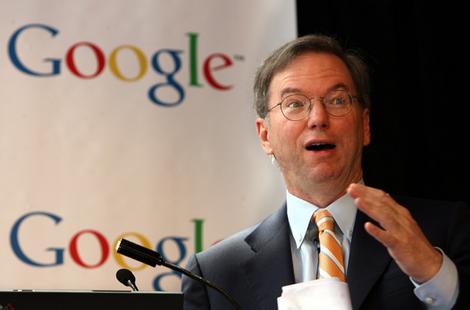
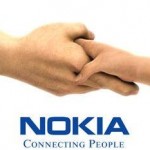
 We’ve heard the discussion about HTML eventually taking over the universe but I think this may be the first time I’ve heard Eric Schmidt say it directly and so succinctly. I’d have to double-check word for word, but the quote I heard was:
We’ve heard the discussion about HTML eventually taking over the universe but I think this may be the first time I’ve heard Eric Schmidt say it directly and so succinctly. I’d have to double-check word for word, but the quote I heard was:

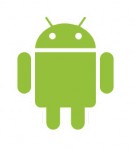

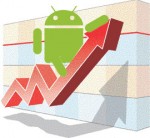
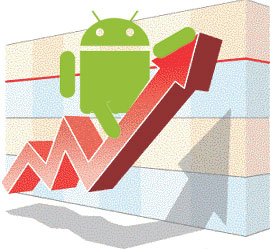



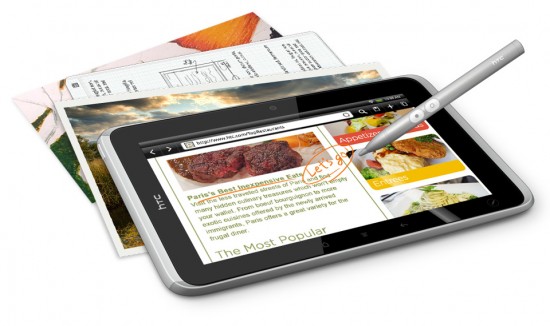
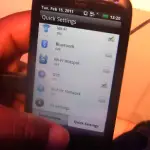
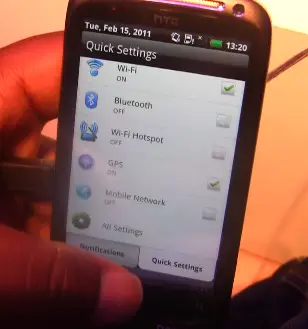
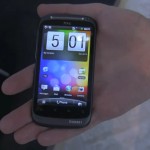

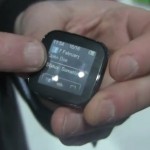
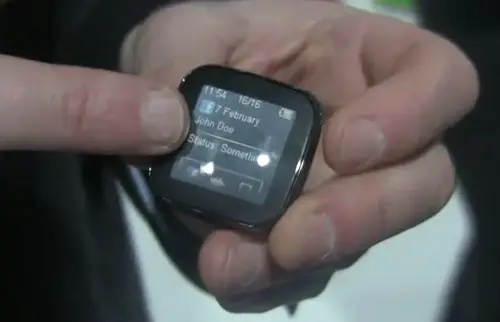

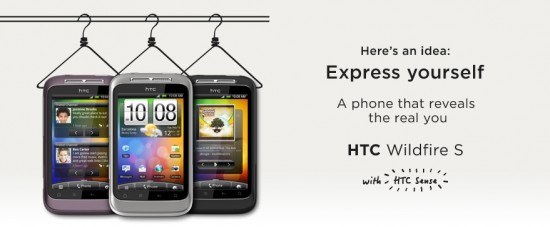
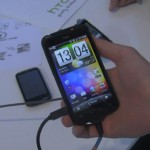

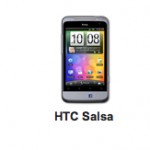

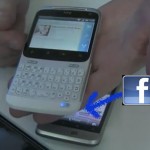
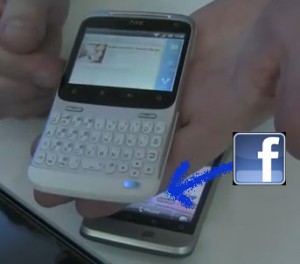
No comments:
Post a Comment